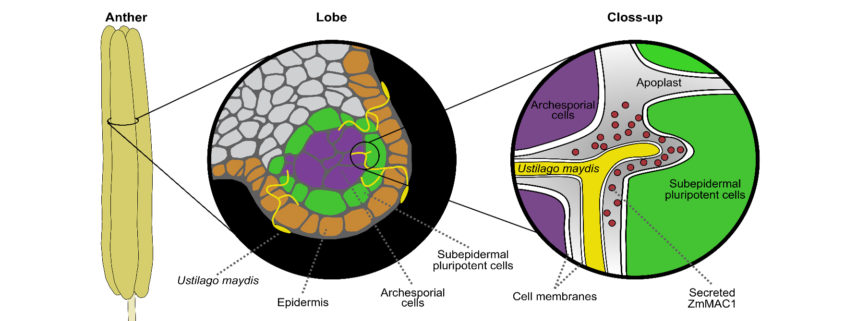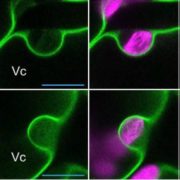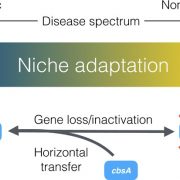PLANT PROTEIN MEETS HOMER´S TROJAN HORSE
By Karina van der Linde and Virginia Walbot
Background: In contrast to animals in which meiotically competent cells develop in embryos, plants switch from vegetative to reproductive growth only during flowering. In maize, the most productive cereal crop, the tassel contains male flowers in which pollen encasing the sperm develop in anthers. Each anther consists of 4 lobes, which have a typical structure of four layers (each a single cell thick) of somatic cells (non-reproductive) enclosing the pre-meiotic archesporial cells. The archesporial cells will undergo meiosis giving rise to four haploid pollen each. The somatic lobe layers are essential for proper pollen formation, and disruptions in their development or function result in male sterility. The ZmMAC1 protein is secreted by archesporial cells and is essential for somatic cell fate specification.
Question: Precisely how (where and when) does ZmMAC1 program somatic development? Can we develop a new method to address this question that does not require maize transformation?
Findings: To deliver the protein to anther cells we were inspired by Homer´s Greek myth of the Trojan horse, and used a maize pathogen to deliver ZmMAC1 to individual cells. First, we established that the maize pathogen Ustilago maydis delivers ZmMAC1 protein into the apoplastic space between anther cells. Next, we tested the impact of Trojan horse-delivered ZmMAC1 within maize anthers lacking ZmMAC1. ZmMAC1 controls division of pluripotent stem cells and defines the fate of the resulting daughter cells. The Trojan horse method has higher resolution than conventional methods because infected cells that received ZmMAC1 could be compared directly with adjacent uninfected cells, providing proof that ZmMAC1 acts as a cell-autonomous signal ((acts on the individual cell level). Moreover, we identified the receptor ZmMSP1 as a ZmMAC1 interactor and genetic partner that is likely responsible for sensing ZmMAC1.
Next Steps: Maize anthers contain hundreds of small proteins of unknown function. Using the Trojan horse strategy we can assess their function in planta. Furthermore, exploiting pathogen protein secretion could be generally a useful method for transient delivery of bioactive proteins with high spatiotemporal resolution to analyze developmental and physiological processes.
van der Linde, et al. (2018). Pathogen Trojan horse delivers bioactive host protein to alter maize (Zea mays) anther cell behavior in situ. Plant Cell https://doi.org/10.1105/tpc.17.00238.










